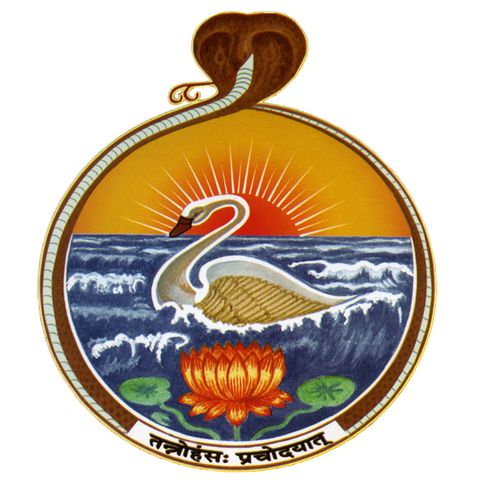6 - Shraddha: Spiritual Evolution through Work Performed with a Sense of Sanctity | Swami Tattwamayananda

Scarica e ascolta ovunque
Scarica i tuoi episodi preferiti e goditi l'ascolto, ovunque tu sia! Iscriviti o accedi ora per ascoltare offline.
Descrizione
Verses: II.1, I.9. This discourse was given on August 1, 2019 at the Lake Tahoe Retreat run by the Vedanta Society of Northern California by Swami Tattwamayananda. -There are direct...
mostra di più-There are direct and indirect approaches to explaining Brahman. In the direct approach, Brahman is explained from the highest perspective. In the direct approach, the highest is explained in connection with what is already known. Both approaches can only give an approximate explanation.
-In Verse II.1, Brahman is described as satyam, existence, jnanam, knowledge, and anantam, infinity. It is existence. The description jnanam, means it is conscious so it rules out the possibility of a mere material reality. The description anantam means infinity which rules out the possibility of a limited perception. Rather, it is the essence of all perception.
-The method of Via Negativa of Meister Eckhart, and the seventh verse of the Mandukya Upanishad removes all possible adjectives for Brahman, what is left out is the Reality.
-Brahman is beyond the five methods of verbalization.
-Brahman is not something manufactured, attained, refined, or as a result of change.
-A man is told to count 10 people. He can only count 9 because he is concentrated on the process of counting. He always forgets to count himself. In the same way, we often fail to recognize our true nature and instead identify with the external world.
-Maya does not exist Absolutely but what we know intellectually may not be accepted by our mind.
-Maya functions through the power of Avarana Shakti, concealment, and Vikshepa Shakti, projection of the false.
-The 7 disciplines for realization of Brahman are (1) Viveka – discrimination between the unchanging and the changing, artha and kama must be practiced with dharma with an eye towards moksha (2) Vairagya – re-prioritization towards the longer lasting, real success means realizing the limitations of material success (3) 6 virtues of restraining the senses (4) mumukshuttvam – higher transcendental goal (5) shravana’ (श्रवण), feeding the mind with healthy food (6) `manana’ (मनन), recollection and thought (7) `nididhyasana’ (निदिध्यासन), internalization.
-The story of Satyakama and Gautama from the Chandogya Upanishad is narrated to explain how the mind evolves and becomes our own spiritual guide.
-When we work with a sense of sanctity and sense (rtam, dharma, satyam), our mind becomes refined and nature because an open book and we evolve.
-Many ordinary people are able to work with great Shraddha and become spiritually evolved. It is the quality of the mind that matters most in work. Perfectionism is only a small part of the sense of sanctity.
-Three kinds of karma (prarabdha, sanchita, agami) are explained and the dynamics of reincarnation is explained.
-Your best friend is happy to help you when you are in trouble, but is also happy when you are happy.
-Creative geniuses can get a glimpse of transcendental reality, but yogis are able to stay at that level.
-Radical change is possible when we surrender to God.
Informazioni
| Autore | Vedanta Society, San Francisco |
| Organizzazione | Vedanta Society, San Francisco |
| Sito | - |
| Tag |
Copyright 2024 - Spreaker Inc. an iHeartMedia Company

Commenti